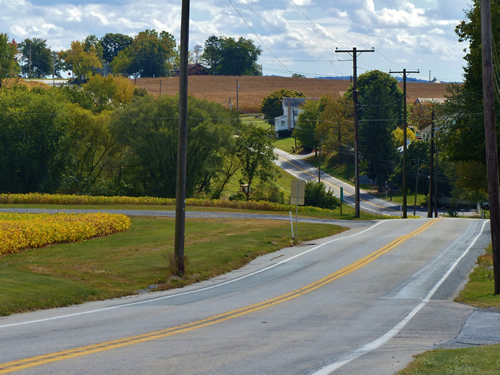Contrary to popular belief, the UK’s busiest towns and cities are not the most dangerous places to drive a car. Remarkably, figures suggest that almost 60% of all fatal road accidents each year happen on rural roads.
Rural driving is not something that is usually incorporated in a standard course of driving lessons. As a result, many motorists approach rural driving in the same way as city driving, which can have disastrous consequences.
The two should be approached in an entirely different way – rural driving calls for a much more cautious approach than most drivers realise.
If you have any concerns regarding your rural driving capabilities, our specialist Rural Driving Course could be just the thing to boost your confidence. We strongly suggest keeping the following tips in mind when driving in the countryside:
- Speed limits must never be ignored
This applies on all roads without exception, but exceeding speed limits on rural roads can be particularly hazardous. Changing weather conditions, unexpected hazards and extremely sharp corners mean even just a few extra MPH could put you in harm’s way.
- Winding roads
Driving on winding roads inherently brings additional risks into consideration. The two most obvious which are impeded visibility and the risk of skidding when approaching short corners at speed. This is another reason why your speed must be closely monitored at all times.
- Surface water and flooding
Drainage on rural roads is often nowhere near as effective as it is in the city. This means that at any time and without warning, you could come across a patch of surface water or potentially deep floodwater. Both of which could pose a major risk to your health and safety, if not approached and traversed carefully.
- Muddy and slippery roads
Rural driving often means compensating for a lack of traction between your vehicle and the road. This can be due to a variety of variables affecting the surface of the road – mud, grass, manure, gravel and so on. Even in relatively amicable conditions, rural roads can quickly become slippery and potentially hazardous.
- Unexpected encounters with wildlife
Instinct takes over when an animal runs into the road, though in many instances leads to poor decision-making. While swerving to avoid collision with a smaller animal appears the ethical thing to do, it could put you and other road users in the vicinity at risk.
- Slow moving traffic
Last but not least, always remember that just beyond any blind corner or hump in the road could be a slow moving (or even stationary) agricultural vehicle. Again, emphasizing the importance of driving at a sensible speed and keeping stopping distances in mind at all times.
For more information on any of the above or to discuss the potential benefits of specialist rural driving lessons in more detail, contact a member of the team at Manchester Driver Training today.









